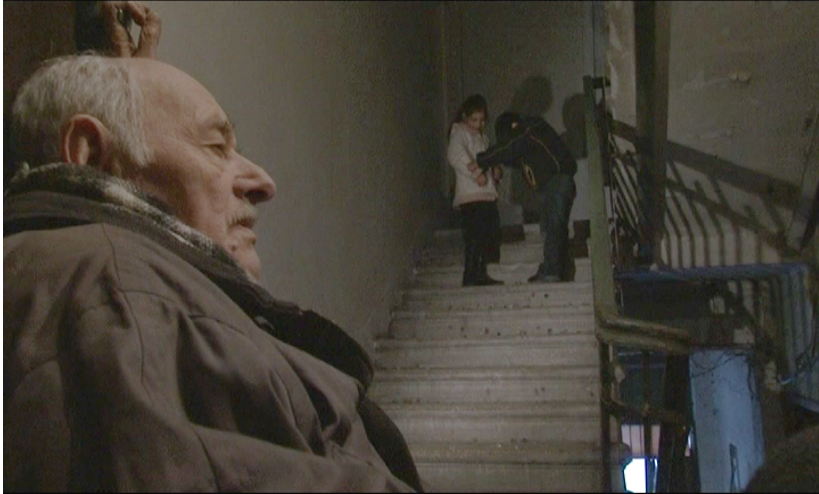Decades ago, paintings were found on the walls of a cave on the island of Sulawesi, Indonesia. Using the latest technologies, it was revealed that the paintings were created 51,200 years ago and are the oldest works of narrative art ever discovered. According to researchers, such paintings had great importance for early Homo sapiens. The walls depict a scene of a boar hunt – so was declared in one of the world's articles on ancient art. Let's accelerate time, make Homo sapiens smarter and more experienced. We will get an Earth where we launch the James Webb Telescope into space to study the extreme points of the universe. Along with technological development, the existing scientific and cultural fields are also developing but, one way or another, we are humans and we cannot fly anything unless we put something into our stomachs. And since the Georgian feast is a separate culture and “academy,” let’s broaden the scope from archaic to modern times and imagine how much talent is poured into the diversity that is called Georgian cuisine.
Mariam Bitsadze’s student film, “The Feast” (2022), is a work that discusses the eternal topic called nutrition. From the beginning to the end, the film is a documented video of the Georgian feast degradation. The events described in it are so familiar to the Georgian viewer that they will definitely identify with one of the characters. If this does not happen, the director has found a way out, the angle of shooting in the key moments of the film is chosen in such a way that it seems that you are sitting at the table yourself and observing the events as a silent spectator.
This film can also be divided into parts: a) “doing shopping” - the camera follows Neliko, the main character of the film and makes you feel the hustle and bustle of the early morning market. The presentation of the diversity of trade and products seems to involve the viewer in this process and makes him want to help Neliko buy products at a good price; b) “preparation”- the director does not only want your visual satisfaction. He intensifies the work of another sense organ and diversifies the dramaturgy with pleasant sounds for the ear. The completion of Georgian dishes, which are cut out in a quick montage and are supposedly easy to prepare, will convince you of Nelikos’s many years experience. c) “meeting guests” - a knock on the door and here he appears for the first time, Neliko's husband, Zura, whose job seems only to be finding and bringing wine. The guests are well-known, characteristic people, adapted to the Georgian topic. From this moment on, the film sets off on the rails for which the locomotive has been gathering strength. The biggest difference, which we can easily perceive at the Georgian table, is that women are on the left, and men - on the right, or conversely, the important thing is that the idea of inequality is born. The director's vision is very feminist, which is clearly visible in the Neliko and Tamila’s characters. Tamila is the image of an immigrant woman who has been living abroad for some time now. The reason was initially to continue her career, but in the middle of the film it becomes clear that she is the shadow leader of the family. By doing this, the director indicates to us that the real power in the family is represented by women. According to Tamila herself, her husband gave in his life, and she had to take care of the family. There is more than one dialogue in the film on various topics, which determines its coherence and authenticity. The film does not revolve around only one topic, but it does not go far. The director wants to show us with complete clarity how the Georgian table has become distorted, where women gossip about each other, and men laugh at each other in order to get drunk on wine, while Neliko herself is almost forgotten by everyone. The toastmaster is not worth mentioning at all, who is so ordinary that you can see such a person at any time, at any table. The director's idea is the same - he wanted to create an image that would be fake, simply because it can hold different amounts of wine; d) “may we gather again”- at this point, we can see that the film is set in 2009, as the “head of the family” is watching a football match between Italy and Georgia, dozing off in front of the TV. Neliko sits down at the empty table for the first time that day, just as empty as those sitting around it.
A special moment is worth mentioning, which conveys Neliko’s inner thoughts when she is invited to a thank-you toast. It is precisely for these inner thoughts that this film is made, to show us the severity of the housewife’s routine, especially when she does not enjoy it. If the film ended at this moment, it would still not lose sense. Everything else is just additional pleasure timing.
The film's cast is professional, which raises its dramatic skill to the highest level, only Neliko’s character cannot play as she should. This may also be a means to make it seem that a real person is alone among the flattering guests. The cinematographer provides comfort to the viewer at all stages of the film, with his mise-en-scenes and the correct filming of the main message. The editing is so timely that when you want to look at a particular scene from a different angle, it seems that the editor understands you and immediately changes your view.
All in all, this film turned out to be a good example of realism, which may have difficulty finding its way onto foreign screens or film forums, but it will definitely interest the Georgian audience.
Amiran Jimsherashvili






